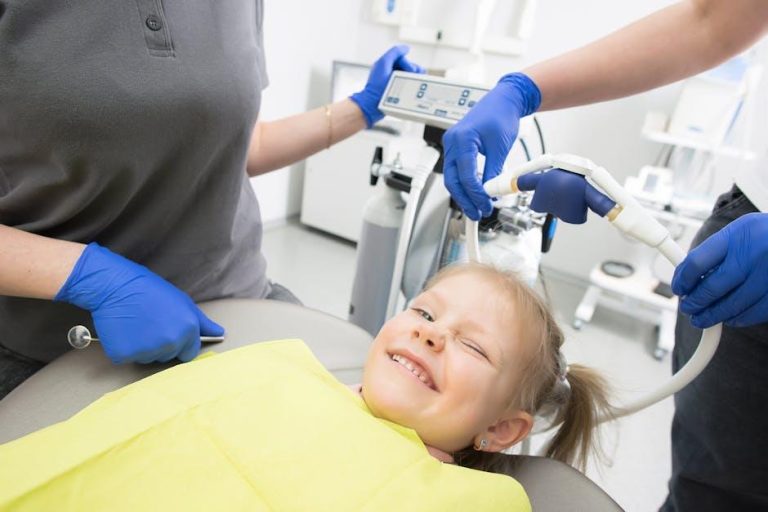1 in 3 Kids Has Dental Problems, Poll Finds – U.S. News & World Report
Recent findings from a U.S. News & World Report poll reveal a concerning reality: one in three children in the United States struggles with dental problems. This eye-opening statistic highlights the urgent need for better pediatric oral health awareness and preventative care by parents, caregivers, and healthcare providers alike.
Understanding the Scope: How Widespread Are Pediatric Dental Problems?
According to the poll’s data, dental issues among children are more common than many parents suspect, affecting approximately 33% of kids under 18. These problems range from early childhood cavities and tooth decay to gum inflammation and other oral health concerns.
Why does this matter? Poor dental health in children can lead to significant consequences including:
- Persistent mouth pain and discomfort
- Difficulty eating or speaking clearly
- Lowered self-esteem due to dental appearance
- Potential for infections that affect overall health
Common Dental Problems in Children
It’s essential for parents to recognize the types of dental problems that often affect children. Here are some of the most reported issues according to the survey and pediatric dental experts:
| Dental Problem | Description | Common Age Group Affected |
|---|---|---|
| Tooth Decay (Cavities) | Damage to the tooth enamel caused by prolonged exposure to sugar and poor brushing habits. | 1–12 years |
| Gum Disease (Gingivitis) | Inflammation of the gums due to plaque build-up, leading to redness and swelling. | 5–18 years |
| Malformed or Crooked Teeth | Misalignment of teeth often requiring orthodontic consultation. | 7–18 years |
| Dental Injuries | Chipped or knocked-out teeth from accidents or sports injuries. | All ages |
Why Are So Many Kids Affected by Dental Problems?
Multiple factors contribute to the high incidence of dental issues in children:
- Poor Dietary Choices: Increased consumption of sugary snacks, candies, and sodas fuels tooth decay.
- Lack of Proper Oral Hygiene: Inadequate brushing and flossing habits can result in plaque build-up.
- Infrequent Dental Visits: Missing regular dental checkups delays early detection of oral problems.
- Socioeconomic Barriers: Families with limited access to dental insurance or care face more challenges.
- Insufficient Parental Education: Misunderstanding about the importance of baby teeth care.
Benefits of Early Dental Care & Prevention
Investing in children’s oral health early on provides long-term benefits that extend beyond preventing cavities. Important advantages include:
- Reduced Dental Anxiety: Regular visits help kids feel comfortable with dental care.
- Better Overall Health: Healthy teeth and gums contribute to proper nutrition and immune system support.
- Improved Speech and Chewing Functions: Helps with better development of eating and speaking skills.
- Enhanced Self-Confidence: A bright smile can positively impact social and emotional wellbeing.
Practical Tips for Parents to Improve Kids’ Dental Health
Ensuring your child’s dental wellness can be manageable with some straightforward steps. Here’s a practical checklist for parents:
- Initiate Oral Hygiene Early: Clean your baby’s gums even before teeth appear and start brushing as soon as the first tooth erupts.
- Use Fluoride Toothpaste: Fluoride strengthens enamel and helps prevent cavities. Consult your dentist for age-appropriate toothpaste.
- Limit Sugary Foods & Drinks: Reduce consumption of sweets, juices, and sodas — offer water and healthy snacks instead.
- Schedule Regular Dental Checkups: Start dental visits by your child’s first birthday and maintain a 6-month routine.
- Encourage Healthy Habits: Teach children how to brush and floss correctly and supervise until they are proficient.
- Discuss Protective Gear for Sports: Use mouthguards during physical activities to prevent injuries.
Case Study: Success Story of Improved Dental Health in Kids
Consider the example of the Johnson family from Ohio. They noticed recurring dental issues with their 6-year-old daughter, Emma, including discoloration and complaints of tooth pain. After consulting a pediatric dentist and adhering to an improved dental routine, the family saw remarkable progress within six months:
| Before | After 6 Months |
|---|---|
| Emma had 2 cavities requiring fillings. | All cavities treated; no new decay. |
| Poor brushing habits with minimal parental involvement. | Emma now brushes twice daily with parental guidance. |
| High consumption of sugary snacks. | Diet shifted to fruits, vegetables, and water. |
| Dental anxiety led to missed appointments. | Emma is comfortable and looks forward to dental visits. |
Firsthand Experience: Tips from a Pediatric Dentist
Dr. Laura Simmons, a renowned pediatric dentist, shares her advice for parents: “Prevention is always better than cure, especially when it comes to children’s teeth. Start dental care early, be consistent with home routines, and never underestimate the power of education. Showing kids that dental visits are fun and not scary will help set the foundation for a lifetime of healthy smiles.”
Conclusion: Prioritizing Children’s Oral Health Is Crucial
The poll revealing that 1 in 3 kids in the U.S. faces dental problems should serve as a wake-up call for families nationwide. By understanding the causes, recognizing the symptoms early, and adopting effective preventative measures, parents can drastically improve their child’s oral health outcomes. Healthy smiles not only boost confidence but pave the way for better overall health throughout life.
Remember to encourage good habits, schedule regular dental appointments, and create a supportive environment where children learn to value their oral hygiene. Together, we can help reduce the alarming rate of pediatric dental issues identified in the poll and give every child the chance to enjoy a beautiful, healthy smile.


